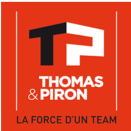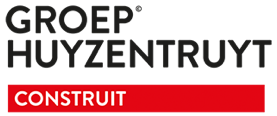Synthèse
The global real estate development market has seen a dynamic landscape characterized by innovation and the desire to adapt to changing consumer and investor demands since 2020. in light of the COVID-19 health crisis, real estate developers have suffered significant impacts with the halt of housing construction sites; in Belgium, for example, the crisis has led to stalled develovelopments and financial losses, with 1.9 million square meters affected in Brussels alone, costing around 2.3 billion euros in tax revenues.
Trends such as real estate crowdfunding and the growing popularity of 3D virtual tours have emerged, offering novel financing channels and an enhanced customer experience. While crowdfunding remains a minority trend, it has demonstrated its potential by complementing developers' equity contributions. The sector demonstrated optimism, with 80% of real estate professionals expressing a positive outlook, although this optimism declined slightly for developers. Notably, demand for real estate in the Flemish region has outstripped population growth, meaning robust economic dynamism and booming construction demand. In addition, the market has seen an influx of investment in retirement homes, as developers collaborate with management specialists to cater for the growing demographic of older adults.
Belgian real estate demand: an evolving market In the Belgian real estate market, there is a clear trend towards increasing demand, particularly for new construction projects.
The data reveal a growing bias towards new construction, with the number of building permits for new builds exceeding those for renovations. This marks a notable shift, as historically, renovation permits have dominated the landscape. By 2020, the figures point to growing demand, with between 65,000 and 70,000 building permits authorized, around half for new builds and half for renovations. This upward trend in permits is a positive signal for property developers, indicating an active market with growth potential.
Geographically, demand is highly regionalized, with the Flemish region leading the way in terms of number of permits, accounting for over three-quarters of permits for new residential construction and over two-thirds for residential renovation. This disproportion reflects the economic vitality of the Flemish region and its demographic influence on the real estate sector. At the same time, the market has been influenced by the demand for innovative financial solutions. Real estate crowdfunding is emerging as an additional source of funding, complementing traditional financing models. Platforms such as Lymo, Wiseed and Anaxago are at the forefront of this trend, although this type of financing still occupies only a minority share of the overall investment landscape. Technological innovation is also changing the way potential buyers experience the purchase of a property.
The advent of 3D virtual tours, often facilitated by virtual reality headsets, is revolutionizing the customer experience, making the property viewing process more efficient and less time-consuming. This could lead to a reduction in the average number of properties visited by potential buyers, which is currently around six homes before a decision is made. Looking at macro market trends, the development of intermediary platforms is becoming increasingly influential. These platforms improve the value proposition for customers by offering a centralized platform for property searches, as exemplified by Bouygues Immobilier's Valorissimo platform.
There is also a noticeable trend towards investment in senior residences. The ageing of the population has created a niche market that has not gone unnoticed, and property developers have launched themselves into exploiting this development.the aging of the population has created a niche market that has not gone unnoticed, and property developers have started to exploit this demographic evolution by teaming up with specialists in the management of retirement homes. In summary, the Belgian real estate market is demonstrating robust demand, driven by positive permitting trends, innovative financing options, technological advances and targeted investment to meet the needs of an ageing population. The dynamic nature of the market points to continued interest in real estate development in Belgium The Belgian real estate development market is characterized by a variety of notis characterized by a variety of notable companies with specialized areas of interest, each bringing a unique approach to the industry.
Here's a look at some of the key market players shaping the future of Belgian real estate.
- Thomas & Piron - Building: A heavyweight in the Belgian real estate sector, Thomas & Piron is known for its comprehensive approach that covers everything from single- and multi-family homes to commercial office space. With a significant presence, they are a one-stop solution for diverse real estate development needs.
- Matexi: Matexi has made a name for itself by offering a range of residential solutions tailored to the needs of the modern family. Their projects often aim to create a sense of community, reflecting their commitment to enhancing the living experience.
- Groep Huyzentruy: A pioneer in both the single-family and multi-family housing segments, Groep Huyzentruyt bears witness to the growing demand for quality housing in Belgium, delivering projects that meet the varied preferences and needs of customers.
- Vastgoedgroep Degroote: Specializing in multi-family housing and commercial space, it is renowned for its innovative design and strategic locations, ensuring that its projects remain attractive to investors and residents alike.
- Houyoux Constructions: Although primarily known for its multi-family residential projects, Houyoux Constructions has demonstrated its ability to meet a wide range of real estate demands while maintaining its industry standards.
- Evillas NV: Evillas distinguishes itself in the market by creating tailor-made properties that harmonize with their surroundings, whether single-family homes or multi-unit residences.
- SF Construct: An experienced developer, SF Construct offers customized real estate solutions, primarily for single-family and multi-family homes, with an emphasis on convenience and contemporary living.
- Cores Development: Cores Development brings a blend of innovation and sustainability to its real estate projects, from residential units to mixed-use office space.
- Kijk & Bouw: This company focuses on single-family homes, offering a combination of preconstruction services and tailor-made building solutions to meet the wishes of individual customers.
- Kolmont: Kolmont is a major player with a varied portfolio of single-family and multi-family homes, demonstrating a commitment to quality and customer satisfaction.
à la compréhension de ce marché
Détail du contenu
 Informations
Informations
- Nombre de pages : 30 pages
- Format : Version digitale et PDF
- Dernière mise à jour : 10/06/2022
 Sommaire et extraits
Sommaire et extraits
1 Market overview
1.1 Definition
The real estate production activity consists of the production of real estate, residential or non-residential, in order to sell them to buyers who will then rent them or use them for themselves directly.
The real estate development activity includes all the means and actions implemented to acquire land, build a building, and finally have it acquired by a client.
The real estate development market can be segmented into :
- Real estate intended for housing (collective building, individual house...)
- Real estate intended for companies (offices, restaurants, shops, warehouses, factories, hotels...)
- Real estate intended for leisure and/or the public (gymnasiums, swimming pools, stadiums, hospitals, town halls...)
It is frequent that the professions of land developer and promoter are mixed, although their activities are distinct:
- The land developer (subdivider, land developer) acquires large vacant lots, divides them into subdivisions, then installs numerous infrastructures (sewers, aqueducts...)
- The real estate developer also acquires vacant land in order to build buildings on it with the aim of selling or leasing them.
The main real estate markets in the world are concentrated in the United States, Asia and Europe, mainly in large cities that attract such as: Hong Kong, Singapore, Paris, London, New York, Los Angeles, and others...
Real estate prices in Belgium have not ceased to increase in recent years, the price index having grown by more than 23% in 6 years, and the health crisis will not have slowed down this evolution in 2020.
On the Belgian market, there are different types of actors linked to real estate development: specialists in real estate development, promoters from the building and public works sector, and promoters from the real estate consulting sector.
1.2 The global market
Global professional real estate investment market World, **-**** Source: ****
The real estate market, which includes real estate development, is mainly driven by the United States (***), Japan, the United Kingdom, Chinagermany, france, Hong Kong, and Canada, according to MSCI.
Size comparison of major real estate markets World, ****, in billions of US dollars Source: ...
1.3 The Belgian market
According to Immoweb, there are *,*** real estate developers and builders in Belgium, offering a total of *,*** properties as of October ****. Although there are a large number of real estate developers, the majority of the market is concentrated in the hands of a small number of players. In the Brussels region, for ...
1.4 The impact of the Covid-19 health crisis on real estate development
As the activity of real estate developers depends in part on the construction of new homes on the territory, which allows them to make sales, a drop in the number of homes built and difficulties in the construction industry inevitably have consequences on the real estate development market in Belgium. The ...
2 Analysis of the demand
2.1 Determinants of demand
According to La Chronique, the main desires of residential buyers are to live in an individual home, with more space, close to shops, transport, places to live and work, to be able to respect their budgetary constraints, to acquire an energy-efficient home, and to have support services for their purchase. To ...
2.2 The demand for a building permit
In order to better characterize the demand for real estate development activity, we use the statistics of the national institute Statbel. These statistics provide us with information on building permit applications, an essential step in a real estate project. The evolution of the number of permit applications allows us to indirectly ...
3 Market structure
3.1 A dynamic market that benefits from innovations
According to several barometers and surveys, real estate professionals are increasingly optimistic. Indeed, the optimism rate for all professions combined has risen from **% in **** to **% in ****. It is notable, however, that only the optimism rate for real estate developers and developers is down very slightly.
Given that the real estate developer ...
3.2 The value chain
The real estate developer is not isolated: the act of real estate development requires the intervention of many actors upstream of the project, during it, and downstream. The main ones are the following:
The project owner. This is the project sponsor, the one who defines the specifications. In the construction industry, ...
3.3 Development of a real estate operation
The criteria for success are rapid marketing and, above all, the conformity of the final result with the budget forecasts. For this, a real estate development operation always follows the same steps:
Launching the project after studying the opportunities Control of the land on which the project will be carried out Study ...
3.4 Financing of a real estate development operation
Real estate development projects can take a long time to get off the ground, and the revenue generated usually comes quite late, so it is necessary to find financing to complete these projects. According to Find and Fund, there are * main sources of financing, with a new one added:
The pre-sale ...
4 Analysis of the offer
4.1 Services offered
A real estate developer is mainly aimed at individuals, investors and companies with a real estate project. Generally, the developer offers real estate development services, but also many other services surrounding their core business.
In terms of real estate development, they propose contracts :
Of Sale in Future State of Completion (***): in ...
4.2 Rising real estate prices
Real estate developers ultimately sell houses, apartments, offices and other infrastructures at market prices. They have little room for maneuver in terms of price increases due to strong intra-sector competition. Their typical pricing towards their clients is therefore that of the market price, and they make their profits by deducting the ...
4.3 New trends
Real estate crowdfunding is a new mode of financing that is beginning to appear in order to supplement the equity contribution of real estate developers. Various platforms offer this financing, including Lymo, Wiseed, and Anaxago.
The *D virtual tour is becoming more and more popular. New technologies have made it possible ...
5 Regulation
5.1 Regulatory framework
In Belgian law, there is no legal definition of real estate development because it covers multiple realities.
There are mainly * forms of real estate development in Belgium:
The promotion-sale: the developer is the project owner, he builds for his own account but with the objective to resell the building afterwards Promotion-construction: ...
6 Positioning of the actors
6.1 Market segmentation
* (***)
- Thomas & Piron - Bâtiment
- Matexi
- Groep Huyzentruyt
- Vastgoedroep Degroote
- Houyoux Constructions
- Evillas NV
- SF Construct
- Cores Development
- Kijk & Bouw
- Kolmont
- Bouygues Immobilier
- Willemen Real Estate (Willemen Group)
- General Construction
- Gehlen Immo
- CBRE
 Liste des graphiques
Liste des graphiques
- Comparaison de la taille des principaux marchés immobiliers
- Les 10 marchés les plus actifs d'Europe
- Marché mondial de l'investissement immobilier professionnel
- Indice des prix de l’immobilier
- Evolution du chiffre d'affaires des activités de promotion immobilière (code NAF 41.10)
Toutes nos études sont disponible en ligne et en PDF
Nous vous proposons de consulter un exemple de notre travail d'étude sur un autre marché !
Entreprises citées dans cette étude
Cette étude contient un panorama complet des entreprises du marché avec les derniers chiffres et actualités de chaque entreprise :
 Choisir cette étude c'est :
Choisir cette étude c'est :
Accéder à plus de 35 heures de travail
Nos études sont le résultat de plus de 35 heures de recherches et d'analyses. Utiliser nos études vous permet de consacrer plus de temps et de valeur ajoutée à vos projets.
Profiter de 6 années d'expérience et de plus de 1500 études sectorielles déjà produites
Notre expertise nous permet de produire des études complètes dans tous les secteurs, y compris des marchés de niche ou naissants.
Notre savoir-faire et notre méthodologie nous permet de produire des études avec un rapport qualité-prix unique
Accéder à plusieurs milliers d'articles et données payantes
Businesscoot a accès à l'ensemble de la presse économique payante ainsi qu'à des bases de données exclusives pour réaliser ses études de marché (+ 30 000 articles et sources privées).
Afin d'enrichir nos études, nos analystes utilisent également des indicateurs web (semrush, trends…) pour identifier les tendances sur un marché et les stratégies des entreprises. (Consulter nos sources payantes)
Un accompagnement garanti après votre achat
Une équipe dédiée au service après-vente, pour vous garantir un niveau de satisfaction élevé. (+33) 9 70 46 55 00
Un format digital pensé pour nos utilisateurs
Vous accédez à un PDF mais aussi à une version digitale pensée pour nos clients. Cette version vous permet d’accéder aux sources, aux données au format Excel et aux graphiques. Le contenu de l'étude peut ainsi être facilement récupéré et adapté pour vos supports.
 Nos offres :
Nos offres :
the real estate development market | Belgium
- Quels sont les chiffres sur la taille et la croissance du marché ?
- Quels leviers tirent la croissance du marché et leur évolution ?
- Quel est le positionnement des entreprises sur la chaine de valeur ?
- Comment se différencient les entreprises du marché ?
- Données issues de plusieurs dizaines de bases de données





























